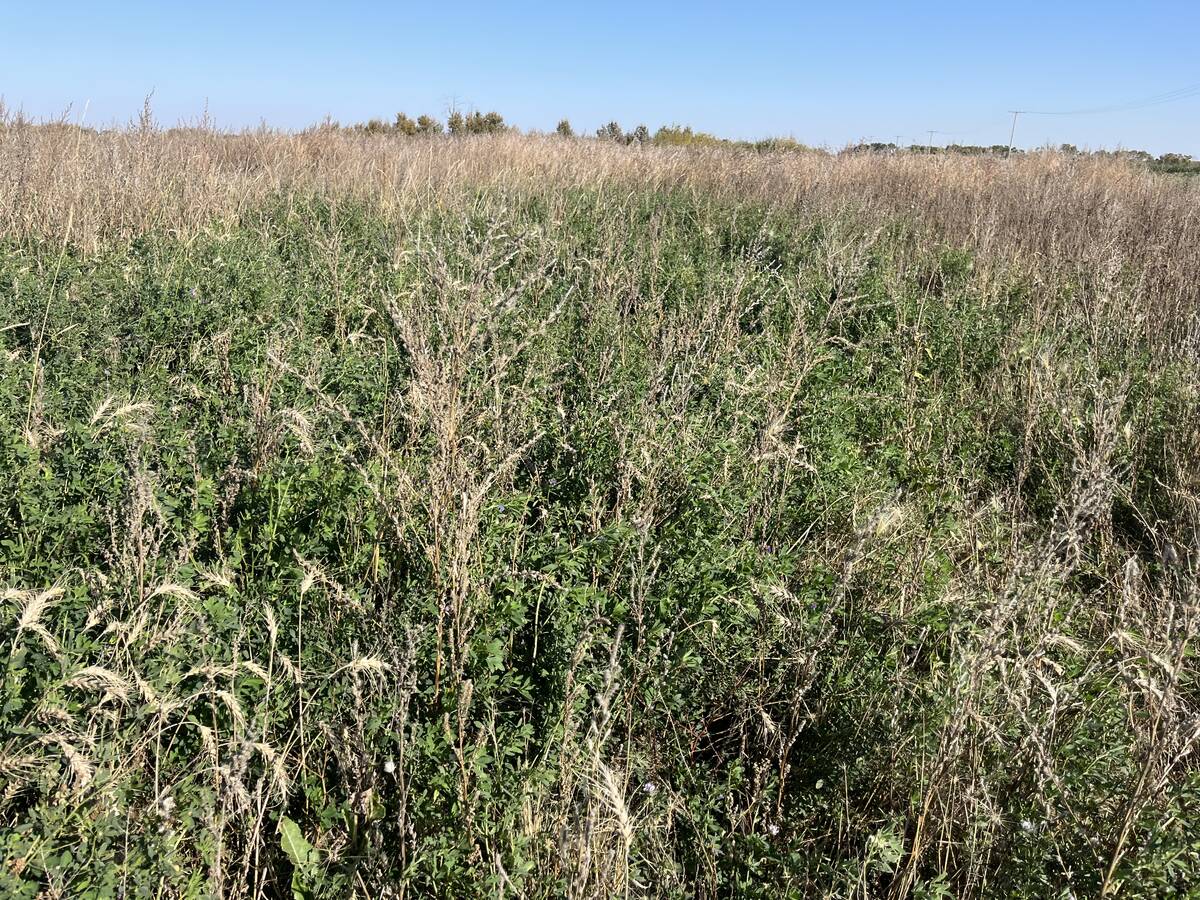& Reuters News Service
Feeding cattle hay before slaughter fills in one piece of the E. coli puzzle as scientists grapple with the problem of animals shedding harmful bacteria, say Canadian researchers.
Tim McAlister and Doug Viera, of Agriculture Canada said the Cornell University findings about a hay diet are not the entire answer.
“It is not the panacea,” said McAlister.
The Cornell study showed feeding cattle hay rather than grain reduced the number of bacteria.
While the American findings are interesting, it may be difficult for western Canadian feedlots to switch diets since many use grain and silage as their main feed components, said McAlister.
Read Also

Dormant seeding forages frees up farmer time and gets ahead of weeds
Dormant seeding isn’t common practice and can appear daunting, but there are some techniques to give Manitoba farmers an edge
Viera, who works at the Kamloops, B.C., research centre, said the American researchers only measured E. coli in general rather than targeting the microorganism in the animal that causes hamburger disease in humans.
“I don’t think this is the complete answer. The problem still exists,” he said.
Among the Canadian studies that explored E. coli is one that withheld feed from animals for 48 hours to see if that reduced the level of E. coli in their bodies.
Analysis of the research showed no statistical difference in reducing E. coli, said graduate student Susan Buchko.
Another study still being analyzed fed animals cracked corn and cotton seed. Corn seems to reduce the acid level in the rumen.
Besides monitoring diets, they took environmental and mouth swabs and found E. coli in water, feed and cattle saliva, said Buchko.
“It’s not just one cause and effect,” she said.
A project to compost manure and see if that eliminates the organism is under way. If farmers spread the manure containing live organisms, the E. coli problem could persist.
James Russell, a United States Department of Agriculture microbiologist, and a team at Cornell University, released the hay diet findings last week. They said grain-feeding creates acid conditions in the digestive tracts of cattle.
“Most bacteria are killed by the acid of stomach juice, but E. coli from grain-fed cattle are resistant to strong acids,” Russell said.
“Our studies indicate that cattle could be given hay for a brief period immediately before slaughter to significantly reduce the risk of food-borne E. coli infection,” his team wrote in their report in the journal Science.
Russell’s team found that bacteria taken from the guts of grain-fed cattle resisted an acid wash that resembled human stomach acid, while bacteria from cattle given hay were killed.
The Cornell cattle did not produce the potentially fatal O157 strain of E. coli, but Russell believes all strains of the bacteria will respond favorably to the hay diet.
E. coli grown in a slightly acidic environment become acid-resistant. When people eat food or drink water infected with the bacteria, the bacteria can survive acid in the stomach, making it to the intestines, causing diarrhea, kidney failure and other problems.
E. coli is common and lives in many animals, including cattle and humans. In recent years a dangerous form, E. coli O157, has emerged. It infects about two percent of cattle and can be passed to humans.















